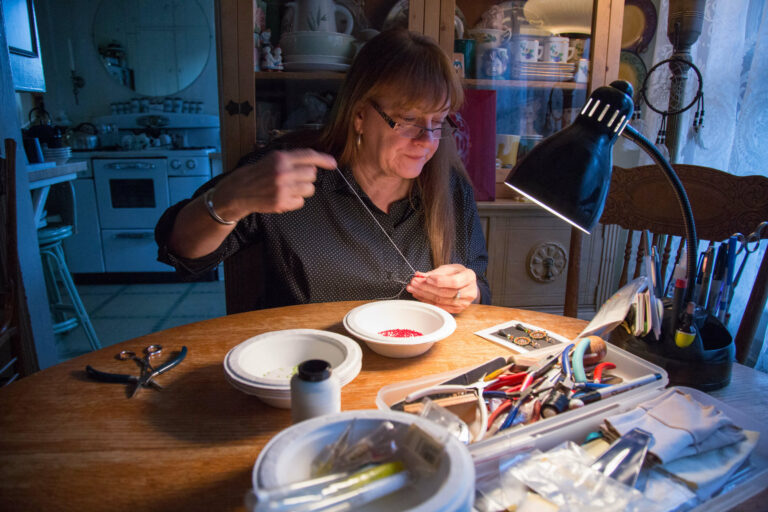Court takes steps to allow Native American artist to truthfully advertise her work

Peggy Fontenot is an artist and member of the Virginia-recognized Patawomeck Indian Tribe. For three decades she has honored her heritage by selling handmade beadwork, silver jewelry, and black-and-white photographs across the United States. She has won numerous awards and has been featured in many prominent galleries and museums, including the Smithsonian’s National Museum of the American Indian in Washington, D.C.
Peggy’s art has helped her become a well-known name as a Native American artist; it’s also how she makes her living.
But in 2018, Missouri enacted a law restricting which artists could lawfully market their work as American Indian-made.
Under the law, such representations could be made only by artists who are members of federally recognized tribes. For artists who are members of state-recognized tribes or are certified non-member artisans of tribes, the law prevented them from continuing to truthfully represent their art as American Indian-made.
By prohibiting Peggy from labeling her work as American Indian-made, the Missouri law prevented her from speaking truthfully about her work, which in turn made it difficult to continue earning a living selling her art to the public.
Worse still, if Peggy continued advertising her work as American Indian-made, she could face fines and even imprisonment under the law.
Peggy decided to take a stand and fight back in court, with Pacific Legal Foundation and the Freedom Center of Missouri representing her to challenge the law as a violation of her right to free speech.
Last month, a federal judge in Kansas City, Missouri, ruled that the Missouri law does not prohibit Peggy, or artists like her, from truthfully representing their art as “Native American” or “Indian,” or from using their tribal affiliations in connection with selling their art.
While the court held that only members of federally recognized tribes are permitted by the Missouri law to use the term “American Indian,” Peggy is free to continue using synonymous terms like “Native American,” which she typically uses.
While Peggy didn’t get everything she wanted, the court’s decision is a step in the right direction.
Time will tell whether the court’s decision will lead to confusion among Missouri art buyers as to what the difference is between an “American Indian” and a “Native American” artist (and spoiler alert, there isn’t one). Regardless, the decision leaves Native artists freer than they were under the law that was originally passed.
This is not the first time Peggy has worked with PLF to fight for the right of Native artists to truthfully market and describe themselves and their art. In 2019, the federal district court in Oklahoma City ruled that an identical law was preempted by the federal Indian Arts and Crafts Act.
Going forward, state lawmakers should take heed when considering similar legislation. Peggy and PLF will be watching.






